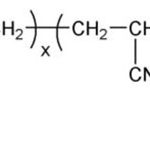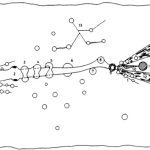Join me at the IMAPS International Symposium on Microelectronics in October. I will be presenting a Professional Development Course on: Polymers for Wafer Level Packaging Monday, October 2 at 10:30 AM. Course Description The course has been completely updated to include a detailed discussion of the polymers and polymer-related processing for Fan-Out Wafer Level (FOWLP) ... [Click to Continue...]
Toughening Thermosets with Reactive Liquid Polymers
Guest post by Jeremy Pasatta, Advanced Polymer Coatings In the previous blog post, we explored the reasons why thermosets benefit from the addition of second phase tougheners. One of the most successful and widely used forms of second phase tougheners is Reactive Liquid Polymers, or RLP. RLP can be any polymer that is low enough in molecular weight to be able to flow at room ... [Click to Continue...]
The Need for Tougheners in Thermosets
Guest post by Jeremy Pasatta, Advanced Polymer Coatings Thermosets such as epoxies, vinyl esters, cyanate esters, and benzoxazines give excellent properties such as chemical and thermal resistance, dimensional stability, high modulus and good adhesion to a variety of substrates. These properties are in part due to the crosslink density of the thermoset, where in general the ... [Click to Continue...]
Beyond Epoxy: High Performance Thermosets Part Six – Cyanate Esters for Electronic Packaging Applications
This is the final post in this series on high performance thermosetting polymers. This post discussed the use of specialized cyanate esters for high performance electronic packaging applications. Dicyanate resins are versatile thermosets and have been used in a wide variety of applications. For example, RTX-366 (Hunstman Chemical), shown in Figure 1, is a high molecular ... [Click to Continue...]
Beyond Epoxy: High Performance Thermosets Part Five, Electronic Packaging
The previous post covered an introduction to cyanate ester thermosetting resins. This post will discuss the main applications of cyanate ester thermosets. In the 1980’s the main applications for cyanate esters were in electronic applications. Specifically, cyanate esters were used in high performance circuit boards and semiconductor substrates. The substrate technical drivers ... [Click to Continue...]




